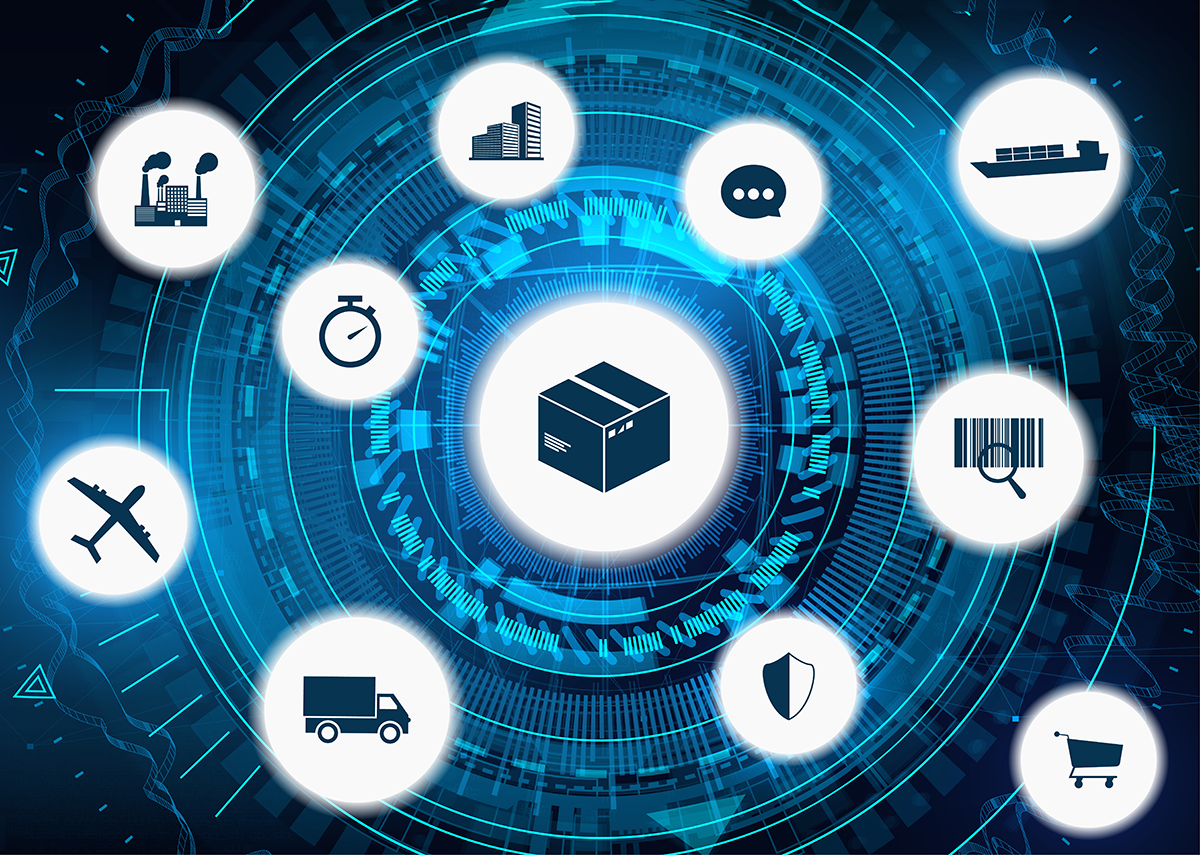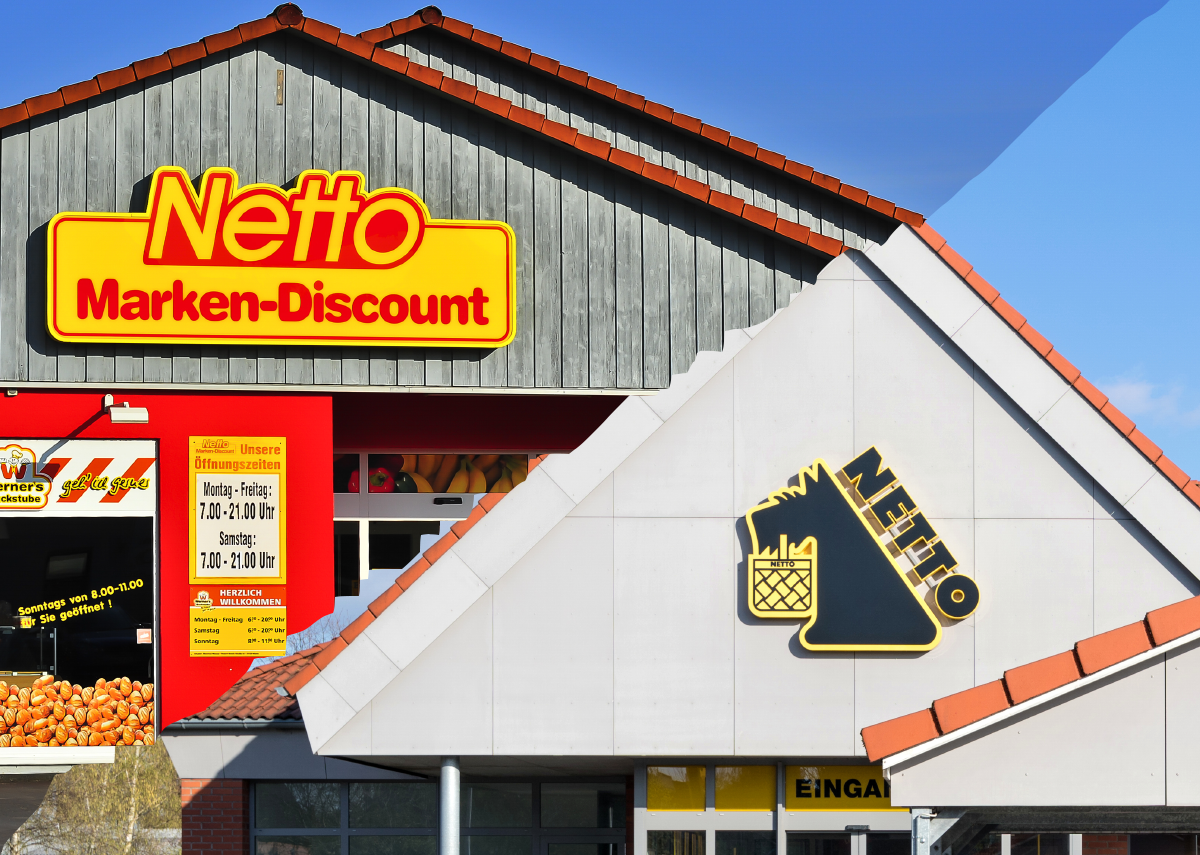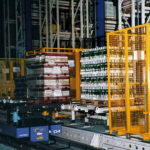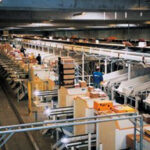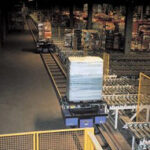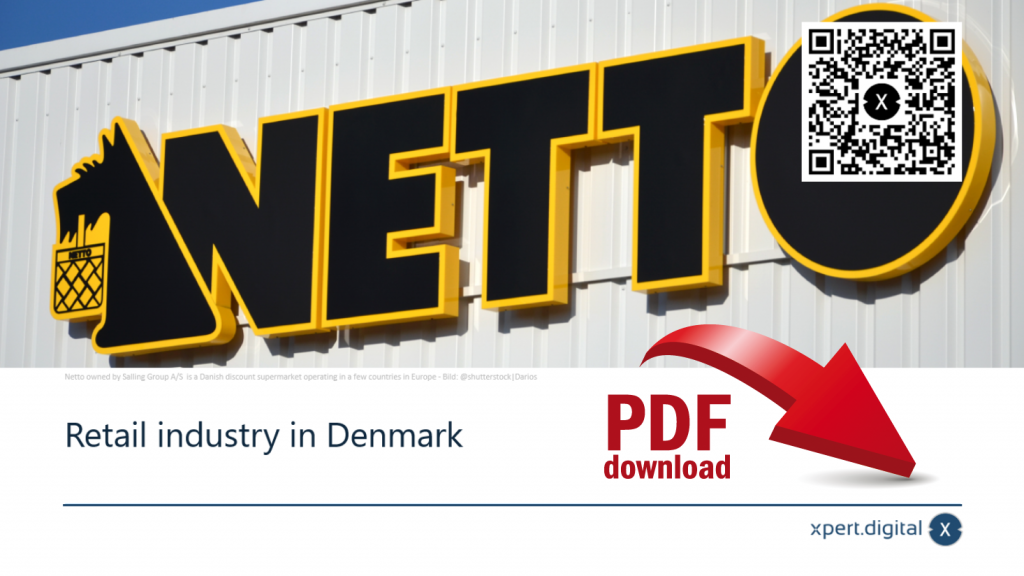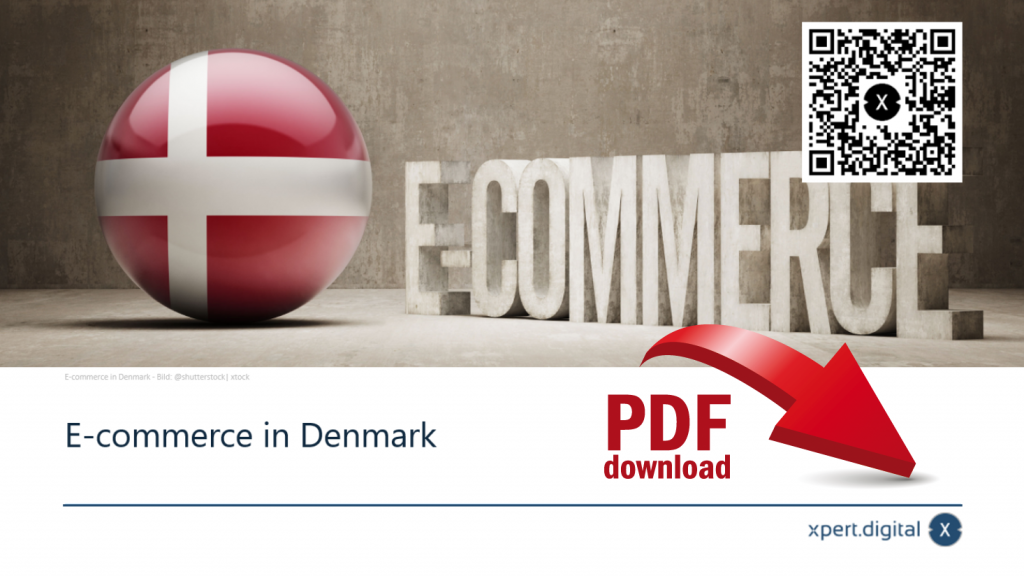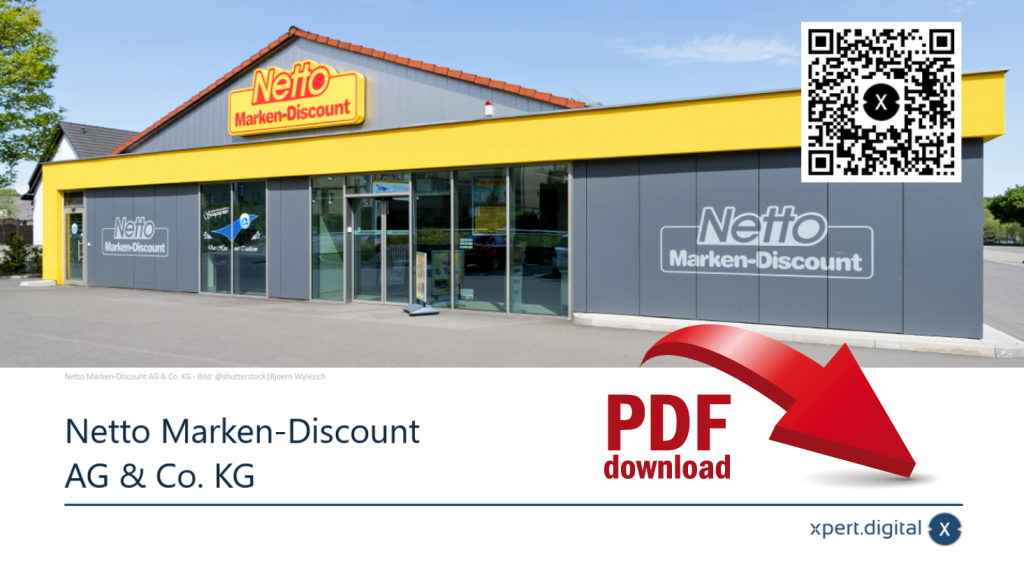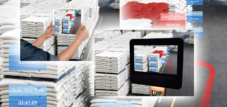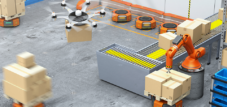Now: Modernization and digitalization of supply chains
Language selection 📢
Published on: October 5, 2020 / update from: July 15, 2021 - Author: Konrad Wolfenstein
For the future and competitiveness of your own company – the goal of retail must be the modernization and digitalization of supply chains.
You can find interesting figures, data and facts at the end of this article as a PDF download.
The goal of retail must be to modernize and digitize supply chains
In the retail sector, a distribution center (also called a branch warehouse) is the basis for the rapid provision of goods in the shipping network. Originally, this was the main difference to the classic centralized and decentralized warehouses, where storage is usually carried out over a longer period of time.
In distribution centers - similar to logistics centers - the goods are only transshipped but not stored. It is the central contact point for suppliers, from where the goods are then immediately distributed to the branches.
Also interesting for you?
- Contract logistics – service providers for logistics – 80% of all larger companies use them!
- High-bay warehouse consulting & planning: Automatic high-bay warehouse – optimize pallet warehouse fully automatically – warehouse optimization
A logistics center, in turn, is an association of several companies that jointly organize and carry out the procurement of purchased goods and the distribution of their own products using the logistics center's company-owned vehicles.
Due to the possibilities of digitalization, the advantages of the respective storage type and form are becoming blurred. Today you can no longer say in general terms what is cheaper or better.
While the focus was once on organization and implementation for a smooth delivery of goods, the task profile has changed due to growing customer requirements and wishes:
- Smooth continuation of supply in crisis situations (e.g. corona pandemic)
- Closing supply gaps in rural regions
- urbanization
- E-commerce
- Autonomous power supply
And because this isn't something that will happen overnight, but rather measures have to be taken and the course set now, it's worth taking a look at Asia, or more precisely at Japan, which is already a good deal ahead of us:
- Japan is already working on the future of tomorrow
- Urban growth – How Japan is setting the course for the future
Netto: The aim is to modernize supply chains throughout Europe
Warehouse optimization, sales and distribution center strategy from Netto.
The first Netto store was opened on April 1, 1981 in Copenhagen in response to the entry of the German discounter Aldi into Denmark. Netto entered the German and British markets in 1990. Netto is a European discount retailer owned by the Salling Group, formerly Dansk Supermarked.
In 1995, Dansk Supermarked took over the ED stores (Europa Discount - supermarket) of Carrefour, a major French supermarket chain. In 1995, Netto expanded into Poland, and seven years later the first store opened in Sweden. The company was founded by Herman Salling in 1960 as Jysk Supermarked (Jütischer Supermarket). Since Herman Salling entered into a joint venture with the AP Møller-Mærsk Group in 1964, the group of companies was called Dansk Supermarked until 2018. In 2017, AP Møller-Mærsk withdrew from the group. Salling is now the sole owner and has changed its name to Salling Group A/S.
Since its founding in 1981, Netto has quickly become the second largest retail company in Denmark. Netto currently has more than 700 branches in Denmark and neighboring countries and is continuing to expand. Netto opened a new distribution center in Koge, on the outskirts of the capital Copenhagen, in October 2003.
With 224 branches in Denmark alone, Netto has expanded to over 700 branches in Sweden, Germany, Poland and England. The driving force behind the success was Netto's unique business policy, which was to limit the number of everyday items, from food to groceries to miscellaneous goods, to about 1,000 items and offer them to customers at the lowest possible price
Due to the same name of the markets, the Netto APS & Co. KG (yellow-black logo-“net with dog”) can be confused with the larger net brand-discount AG & Co. KG (yellow-red logo-“net without dog”). There are two independent companies-Edeka, owner of Netto Marken-Discount, but from 2005 to 2012 had a participation of 25 % in the German subsidiary of the Danish net retail chain.
Netto's sales volume has steadily increased over the years. Attempts were made to meet the increasing requirements with various measures, expansions and increased personnel, but at some point the capacity limits for the existing distribution center were reached. Capacity utilization was almost 100 percent.
A new distribution center had to be built. DAIFUKU was awarded the project because of its decades of experience in the material transport industry and its flexible system solutions, including full automation.
The new center was built to increase logistics efficiency for a growing number of products and to accommodate future business expansion. As one of the largest centers in Northern Europe, the latest technologies have been introduced to ensure high automation of sales work.
DAIFUKU has set up an automated pallet warehouse with around 17,000 spaces. Aftersales engineers took over maintenance. With regard to the technical availability of the system, DAIFUKU responsible for managing the product life cycle at Netto.
Continuous warehouse optimization
For most system manufacturers, the focus has so far been on getting a system through the warranty period as cost-effectively as possible. DAIFUKU 's service concept is more holistic. This is expressed, for example, in the fact that DAIFUKU evaluates daily reports about the availability and performance of the system. If a gradual decline in performance becomes apparent or if a part of the system causes multiple malfunctions, DAIFUKU immediately take modernization measures in coordination with those responsible for Netto. Maintenance is therefore not carried out at rigid intervals, but as required. This means that necessary maintenance work is carried out much more efficiently and therefore more cost-effectively.
Implementation details
The modernization became necessary because the number of different products had almost tripled since the plant was put into operation. In contrast, the quantities of individual items to be picked had been significantly reduced. The trend towards an ever greater variety of products on supermarket shelves and ever smaller quantities of each item being stocked is still unbroken. But the capacity of the previous net warehouse had reached its limits - instead of the desired two-shift operation, work was now carried out in three shifts seven days a week.
A challenge during the modernization was the small time windows available for converting the warehouse technology. The top priority was that ongoing operations could not be disrupted in any way. This means that the warehouse with 23 aisles, the picking system with tilting tray sorter, three automatic and two manual packing areas as well as a shipping/buffering system with a sorting transfer vehicle (STV) remained functional. However, it was optimized by modifying eight aisles for the interim storage of pre-picked customer pallets. For example, the throughput of the retrieval stations could be increased, which reduced waiting times for manual picking. Overall, the system was noticeably relieved, so that appropriate time windows were again available for maintenance work and system care.
The concept, based on an economic benefit analysis by DAIFUKU , called Quick Study TM , also included the construction of an automatic high-bay warehouse with eight aisles and more than 6,000 pallet spaces on 2,080 square meters for non-perishable food, wine and spirits, as well as non-food items . Eight storage and retrieval machines are used here; the new storage area is used as a pre-pack warehouse with a shipping buffer function. Before the modernization, the existing shipping lanes were barely sufficient to prepare them for shipping due to the sharp increase in the volume of goods. There were always waiting times when loading trucks. The new shipping buffer provides a remedy here.
In order to interlock the processes in the warehouse areas, Daifuku a tipping switch on 28 additional targets, each with one packing space. In addition, Daifuku a “bypass” from conventional conveyor technology. Due to the high load of the system, the conversion of the sorter during ongoing operation had to be realized within a weekend. An equally close time frame was to connect the eight new camp alleys to the STV loop in the storage area.
- Netto A/S – Image: ©DAIFUKU
- Netto A/S – Image: ©DAIFUKU
- Netto A/S – Image: ©DAIFUKU
Due to the high travel speeds of the rail-guided vehicles and the optimization of the material flow, the loop can continue to be operated with the same number of vehicles. DAIFUKU also integrated a special picking area with automatic provision for quarter pallets that previously could only be handled manually. Ergonomic handling devices, 24 sloping roller conveyors, an automatic film wrapper and an automatic pallet inspection system are now used in the warehouse.
In which direction the development is going and why
Retail is currently going through a phase of change, which brings with it numerous new requirements for logistics and the supply chain.
Complete outsourcing of maintenance, servicing, modernization and continuous process optimization is increasingly replacing traditional after-sales service.
Digitalization with the accompanying globalization and rapidly evolving customer expectations, as well as growing e-commerce, are also increasing the trend towards an outsourcing strategy for intralogistics in many small and medium-sized companies.
A research study by DHL Supply Chain found that 48% of companies use a combination of in-house and outsourced logistics solutions.
The challenges in the retail industry today are more diverse than ever. Rising costs and an increasing decline in prices are forcing companies to work as cost-effectively as possible along the supply chain. An important starting point is the personnel and energy costs in the warehouse. Further developments that have a strong impact on logistics include global expansion and the consolidation of locations, which are now necessary in retail in order to survive in the market. In addition, the increasingly extensive procurement of goods from the Far East as well as the rapidly growing product variety and the associated smaller product quantities also bring with them new requirements.
DAIFUKU offers automated logistics solutions tailored to the needs of retailers. This includes energy-efficient storage, conveyor and order picking technologies as well as special applications for unloading containers and palletizing container goods.
Developments in the industry require adjustments to intralogistics at ever shorter intervals and increasingly complex automated systems. It is therefore hardly surprising that companies are increasingly deciding to outsource comprehensive areas of technical service for their logistics systems to the system manufacturer.
Retail in Denmark – Retail industry in Denmark
English version – To view the PDF, please click on the image below.
English Version – To view the PDF, please click on the image below.
E-commerce in Denmark – E-commerce in Denmark
English version – To view the PDF, please click on the image below.
English Version – To view the PDF, please click on the image below.
Food discounter in Germany
German version – To see the PDF, please click on the image below.
German Version – To view the PDF, please click on the image below.
Netto brand discount
German version – To see the PDF, please click on the image below.
German Version – To view the PDF, please click on the image below.
Xpert.Plus helps you modernize and digitize your supply chains
Xpert.Plus is a project from Xpert.Digital. We have many years of experience in supporting and advising on storage solutions and in warehouse optimization , which we bundle in a large network Xpert.Plus
I would be happy to serve as your personal advisor.
You can contact me by filling out the contact form below or simply call me on +49 89 89 674 804 (Munich) .
I'm looking forward to our joint project.
Xpert.Digital – Konrad Wolfenstein
Xpert.Digital is a hub for industry with a focus on digitalization, mechanical engineering, logistics/intralogistics and photovoltaics.
With our 360° business development solution, we support well-known companies from new business to after sales.
Market intelligence, smarketing, marketing automation, content development, PR, mail campaigns, personalized social media and lead nurturing are part of our digital tools.
You can find out more at: www.xpert.digital – www.xpert.solar – www.xpert.plus



